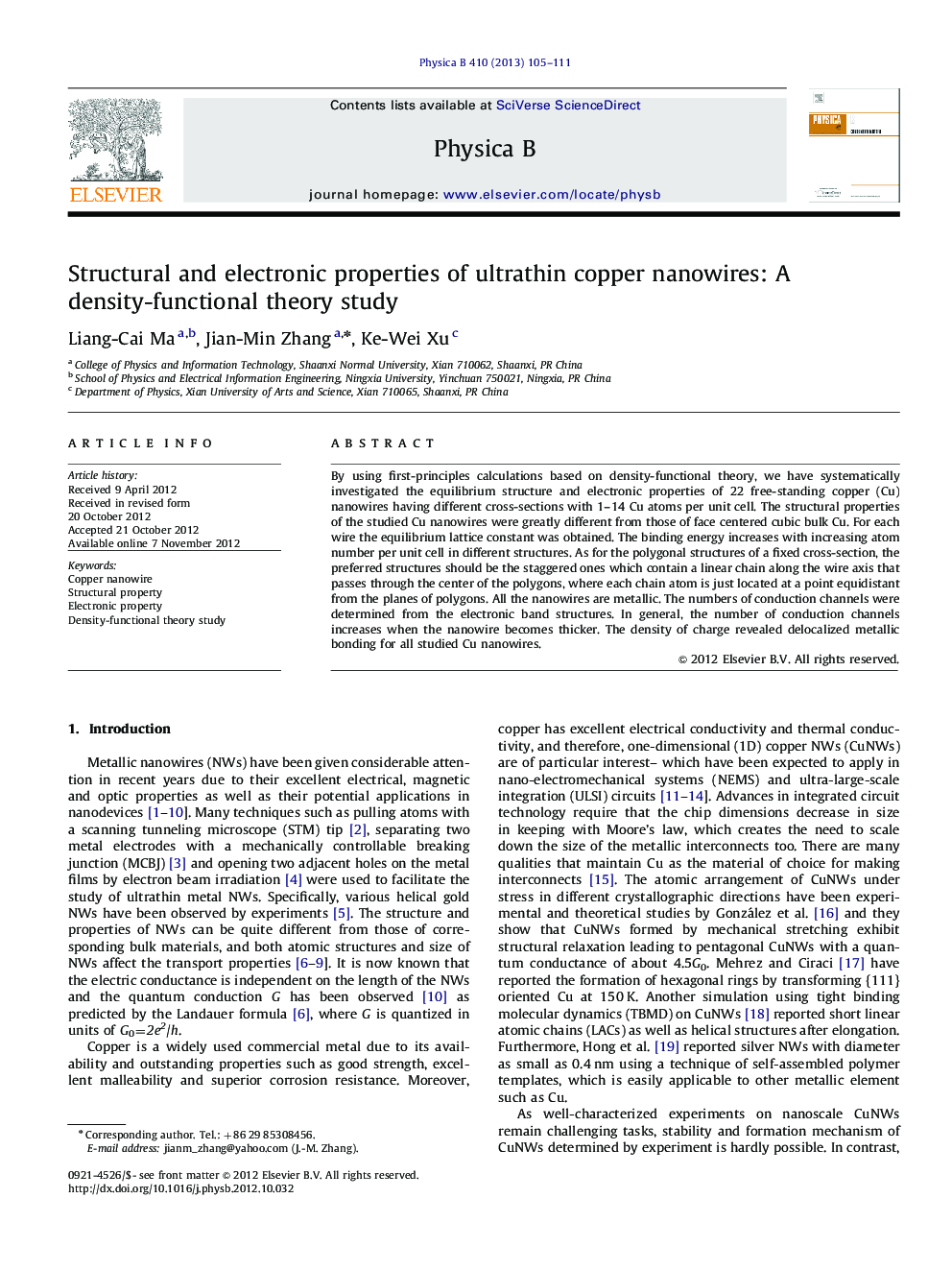| Article ID | Journal | Published Year | Pages | File Type |
|---|---|---|---|---|
| 1810227 | Physica B: Condensed Matter | 2013 | 7 Pages |
By using first-principles calculations based on density-functional theory, we have systematically investigated the equilibrium structure and electronic properties of 22 free-standing copper (Cu) nanowires having different cross-sections with 1–14 Cu atoms per unit cell. The structural properties of the studied Cu nanowires were greatly different from those of face centered cubic bulk Cu. For each wire the equilibrium lattice constant was obtained. The binding energy increases with increasing atom number per unit cell in different structures. As for the polygonal structures of a fixed cross-section, the preferred structures should be the staggered ones which contain a linear chain along the wire axis that passes through the center of the polygons, where each chain atom is just located at a point equidistant from the planes of polygons. All the nanowires are metallic. The numbers of conduction channels were determined from the electronic band structures. In general, the number of conduction channels increases when the nanowire becomes thicker. The density of charge revealed delocalized metallic bonding for all studied Cu nanowires.
